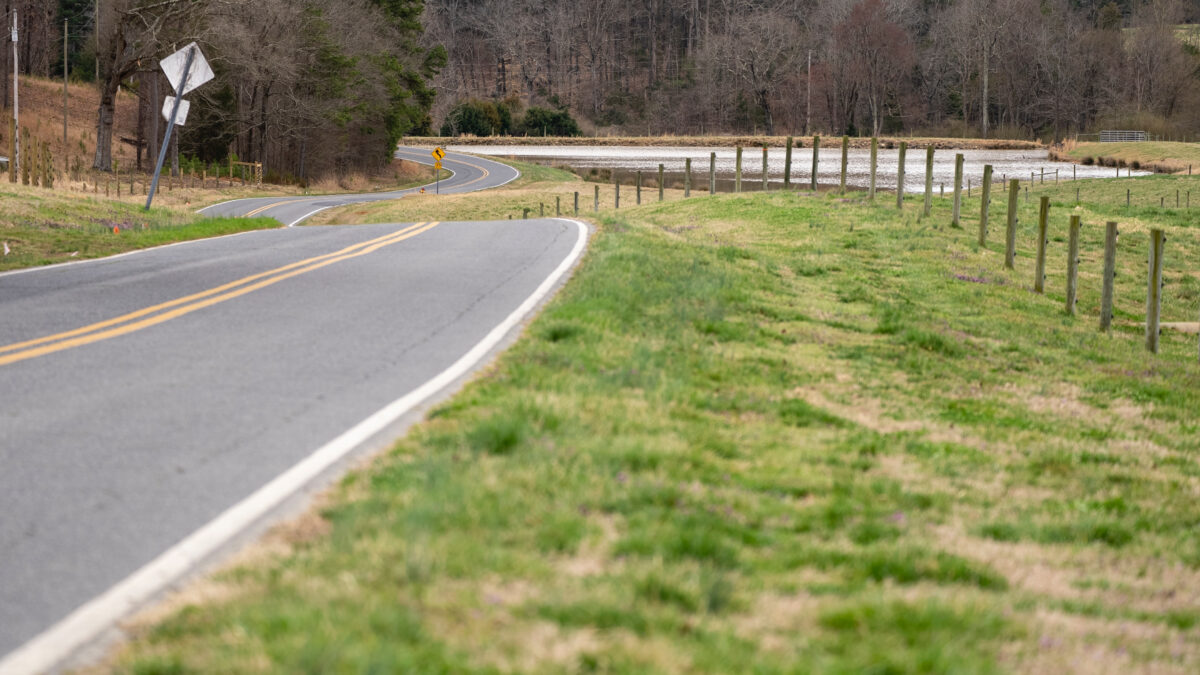Five Tips When Driving Behind Farm Equipment
TOPICS
Farm SafetyGuest Author
Special Contributor to FB.org

photo credit: Mark Stebnicki, North Carolina Farm Bureau, Used with Permission
Guest Author
Special Contributor to FB.org
By Julie Tomascik
You left your house 15 minutes late and you get caught in traffic. The reason? Large farm equipment.
It’s that time of year again, when farmers are beginning to plant crops from the Rio Grande Valley to Central Texas. If farmers in your area aren’t planting yet, it won’t be long before they are, as temperatures steadily warm up.
Their office is that tractor you’re stuck behind. Their hours are likely sunup to sundown and they’re trying to beat whatever Mother Nature is throwing their way.
That means more tractors and large equipment on the road with you.
We’ve all seen them. They’re large, wide and slow. Your car is fast—much faster than the 25 miles per hour of the farmer’s equipment. But public roads are often the only way to move it.
And because Texas is a top agricultural state, every Texan—urban, suburban and rural—will eventually encounter large farm equipment on the road. The same scenario plays out across the country from most drivers sooner or later.
Your fast cars and farmers’ slow tractors can be a recipe for disaster. Accidents involving farm equipment and cars happen every year. And families are forever changed.
Farmers respect your right to the road, but they’d like that same courtesy returned to them.
It seems, however, that awareness is often the toughest thing to grow. Awareness about what farmers and ranchers do, but also about farm safety—on and off the road.
That’s where we all come into play. Here are five things you can do when you meet farm equipment on the road.
- Be alert and cautious. Give large farm equipment and other slow-moving vehicles space.
- Do not pass if you are in a space designated as a “No Passing Zone” or in any area where it is not safe to do so—intersections, bridges and railroad crossings, among others.
- Make sure the tractor isn’t trying to make a left turn before you pass on the left.
- Don’t tailgate.
- Be careful when you do get the chance to pass. Farmers will often move their equipment over when it is safe to do so.
It can be frustrating, but those farmers are just trying to get to and from their job, too. Only it’s a little different. Their office is that tractor you’re stuck behind. Their hours are likely sunup to sundown and they’re trying to beat whatever Mother Nature is throwing their way.
But they get it. They know 25 miles per hour isn’t the fastest or most ideal speed. They understand you have places to be, deadlines to meet and families to see. They can relate.
In Texas, bills have been filed that would make it legal to drive slow-moving vehicles, like farm equipment, on the shoulder. That would help alleviate some of the issues. Another bill, if passed, would give farmers more flexibility on where they place slow-moving vehicle signs—the large, neon orange triangles displayed on the back of vehicles. Doing so would make them more visible and hopefully raise more awareness of the speed difference.
Because one accident. One moment. One day. All could be life changing.
So slow down, enjoy some good tunes on the radio, catch up on a podcast or listen to an audio book. Being behind a slow-moving vehicle will only add a little extra time to your commute. But being a responsible and courteous driver could save your life and the farmer’s.
Julie Tomascik is associate editor at Texas Farm Bureau. This column was originally published on the Texas Table Top website.
Top Issues
VIEW ALL